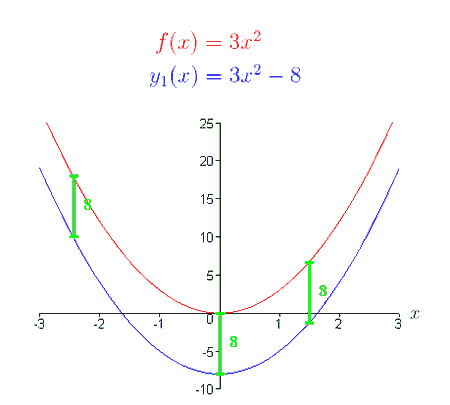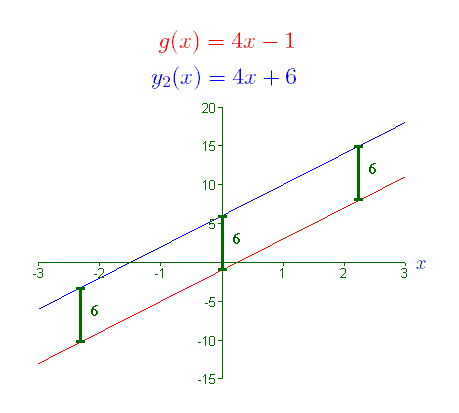Transformations of Graphs
Vertical Translations
|
What is a Vertical Translation? Vertically translating a graph is equivalent to shifting the base graph up or down in the direction of the y-axis. A graph is translated k units vertically by moving each point on the graph k units vertically.
The value of k determines the direction of the shift. Specifically,
Examples of Vertical Translations Consider the following base functions,
The graphical representation of function (1), f (x), is a parabola. What do you suppose the graph of y1 (x) = f (x) - 8 looks like? Using the definition of f (x), we can write y1 (x) as, y1 (x) = f (x) - 8 = 3x2 - 8. Based on the definition of vertical shift, the graph of y1 (x) should look like the graph of f (x), shifted down 8 units. Take a look at the graphs of f (x) and y1 (x).
The graphical representation of function (2), g (x), is a line with a slope of 4 and a y -intercept at (0, -1). What would the graph of y2(x) = g (x) + 7 look like? Using our knowledge of vertical shifts, the graph of y2(x) should look like the base graph g (x) sifted up 7 units. We can write y2(x) as, y2(x) = g (x) + 7 = 4x -1 + 7 = 4x + 6 Therefore, the y-intercept has moved up 7 units, from (0,-1) for g(x) to (0,6) for y2(x), as shown in the following graphs.
***** In the next section, we will explore horizontal translations. |
The Biology Project > Biomath > Transformations > Vertical Translations
Department of Biochemistry and Molecular Biophysics
The University of Arizona
January 2006
Contact the Development Team
http://www.biology.arizona.edu
All contents copyright © 2006. All rights reserved.

